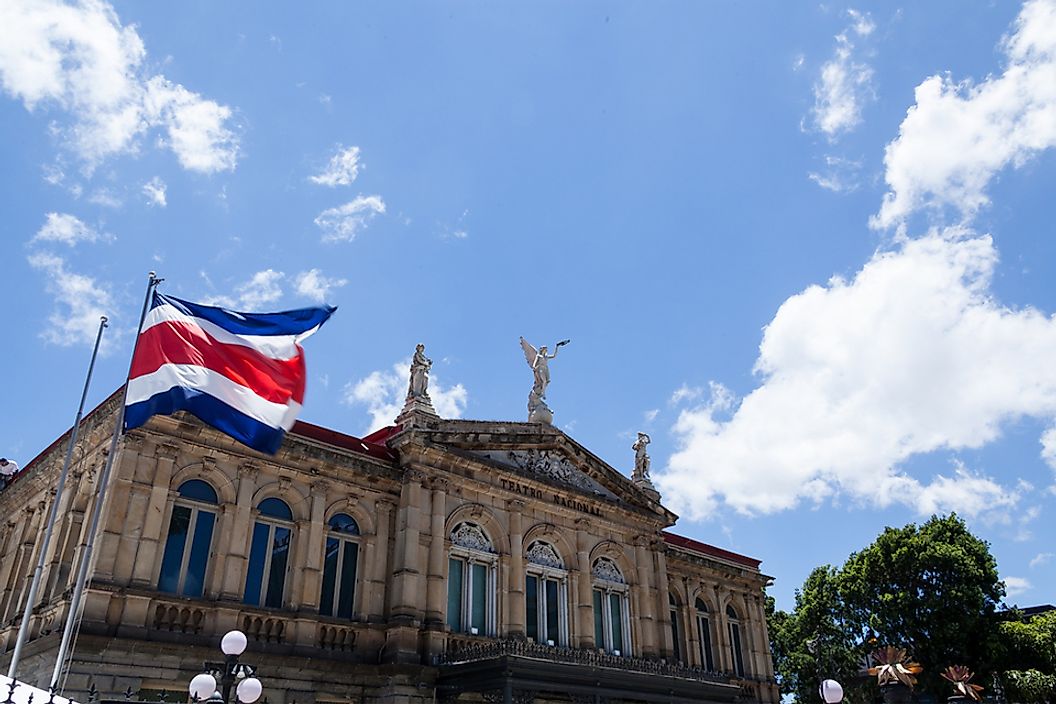When Did Costa Rice Gain Independence From Spain?

The Republic of Costa Rica gained independence on September 15, 1821, as a result of the Mexican War of Independence that lasted from 1810 until 1821. Costa Rica never fought for independence, but Guatemala declared the independence of all countries in Central America in 1821. However, Costa Rica was already an autonomous Spanish province after adopting the Spanish Constitution of 1812, which the country adopted for a second time in 1820. To date, Costa Ricans celebrate their Independence Day on September 15. An immediate challenge for the country after independence was the need to decide whether to remain independent or join the Mexican Empire. Disagreement led to the Costa Rican Civil War of Costa Rica that ended in 1823 when the pro-independence side won and created the capital, San José. In 1838, the country withdrew from the Federal Republic of Central America and became fully sovereign.
Spanish Colonization
In 1502, Christopher Columbus named the land la costa rica, meaning "rich coast" and described the people as having nice jewelry. However, other sources argue that Gil González Dávila was the first to use the name in 1522 after observing that the natives had minerals. Subsequent Spanish explorations in the region established the colony in 1524 as part of the Captaincy General of Guatemala within the Viceroyalty of New Spain. The Spanish conquest was long and had so many casualties that by the year 1611, factors such as disease, war, exploitation, and relocation, among others, had reduced the indigenous population from 120,000 in 1569 to only 10,000. Costa Rica’s distance from the capital and its lack of resources made it less attractive for settlements and therefore it remained relatively poorer than other colonies. The low indigenous population also meant that there were no forced laborers. These challenges and others caused the Spanish crown to neglect the colony and let it operate autonomously.
Post-Independence Growth
Unlike it neighbors, the circumstances surrounding colonization in Costa Rica enabled the country to become an egalitarian society. By the time it achieved independence, the country exported coffee, tobacco, sugar, and cocoa, which remained the main income source until the twentieth century. Agriculture was vital for the initial modernization of Costa Rica. By the early twentieth century, there were enough road networks and a railway to enable trade with neighboring countries and eventually, Costa Rica began to export coffee to Europe. This trade led to the rise of the wealthy coffee farmers named the Coffee Barons. Development and construction of the railway attracted Afro-Costa Ricans, who were mainly Jamaican immigrants. Since American businessman Minor C. Keith funded the railway construction, the Costa Rican government gifted him large tracts of land which he used to farm bananas. With time, bananas overtook coffee as the main export, which gave rise to influential foreign-owned corporations like the United Fruit Company that not only had a stake in the economy but also became a symbol of an exploitative export-driven economy.
Modern Day Costa Rica
In the twentieth century, the country was largely peaceful compared to its neighbors, apart from a few events such as the Costa Rican Civil War. Since 1953, Costa Rica has had fourteen successful democratic elections and a relatively stable economy. Currently, the country's main concern is the growing debt and budget deficit. The agricultural sector generates approximately 5.5% of the GDP, whereas the service and industry sectors generate 75.9% and 18.6%, respectively. Agriculture, service, and industry employ 12.9%, 69.02%, and 18.7% of residents, respectively. Other admirable facts about Costa Rica include its affordable housing, quality education, and high quality health services in government facilities.











